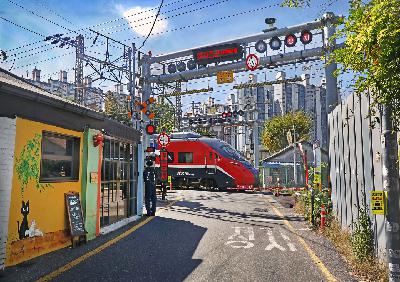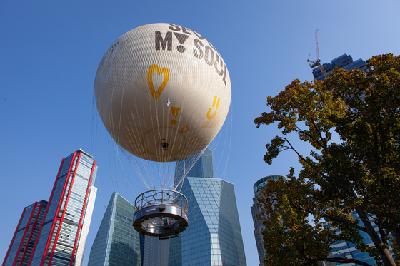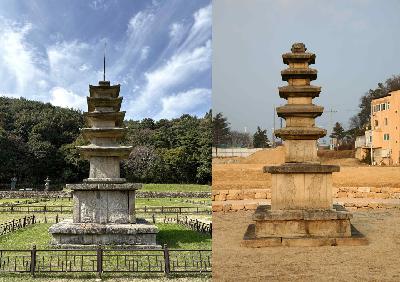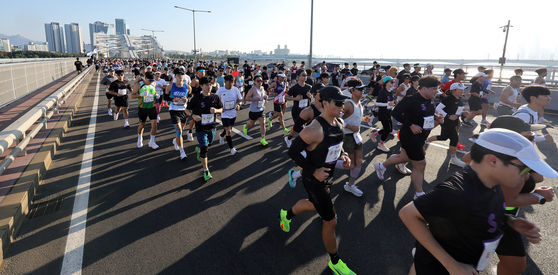September's rains create farmer pains as rice, cabbage, soy crops across Korea ruined
Update: 2025-10-31
Description
This article is by Special Reporting Team and read by an artificial voice.
Farmers are making desperate calls for government support as weeks of unseasonal rain have rotted their crops all across the country.
On Wednesday afternoon, in a soybean field in Anhwa-ri, a village in North Chungcheong's Yeongdong County, a 74-year-old farmer surnamed Lee was using a brush cutter to take down rows of soybean stalks that had turned gray.
Lee had planted Daewon soybeans, a variety typically harvested in late September or early October. The pods should have ripened to a yellow hue, but instead had turned ashen and rotten after enduring heavy and prolonged rainfall.
"Every time the beans were about to ripen, it rained - and then it rained again at harvest time, so I couldn't cut them in time. Most of them rotted," said Lee. "I should've harvested them in late September or early October, but the rains continued through Chuseok and ruined the entire crop."
When Lee opened one of the pods, the soybeans inside were small and shriveled.
"They're supposed to be larger and a deep yellow by now," he said. "Nearly all 1,980 square meters of this field have rotted. I'll have to cut everything and see if there's anything salvageable."
Nearby, another farmer, 66-year-old Ahn, said he might have to dispose of all the shine muscat grapes grown across his 4,950-square-meter (1.22 acres) field. This year's extended rainfall caused sugar levels to drop far below normal.
"You need at least 17 to 18 Brix [a measure of sugar content] to sell, but most are around 13 to 14," Ahn said. "I'll wait another 10 days, but I may have to discard them."
An unusually long autumn rainy season has caused widespread crop damage across Korea. The persistent rains have affected not only rice, but fruits and vegetables as well, with crops succumbing to disease or missing their harvest windows, prompting many farmers to plow their fields under.
"Bakanae disease" - also known as foot rot - has been spreading due to the rainy season, impacting 36,320 hectares of rice paddies nationwide during the harvest period, according to the Ministry of Agriculture, Food and Rural Affairs. The disease leaves sesame-shaped dark brown spots on rice leaves and degrades grain quality.
If high temperatures persist through the ripening period, rice roots may even begin to rot in the paddies.
In South Jeolla alone, the disease has affected 13,336 hectares, including 2,000 hectares in Goheung County and 1,760 hectares in Haenam County. Prime Minister Kim Min-seok visited a damaged paddy in Haechang-ri, Anyang-myeon, Jangheung County on Oct. 7 to inspect the damage firsthand.
In South Gyeongsang, 4,935 hectares - or 8.2 percent of the province's total rice harvest area of 60,231 hectares - were found to be affected. Some farms also reported "preharvest germination," where rice begins to sprout prematurely due to prolonged rainfall.
The resulting sprouts dry out and turn black when exposed to sunlight, further lowering crop quality. As of early October, 639 hectares in the region had been affected.
In Haenam County, South Jeolla - the country's largest napa cabbage-growing region - farmers are also suffering. With kimchi-making season approaching, a bacterial soft rot outbreak has spread for the second year in a row, causing cabbage to become mushy and spoil.
While the disease spread in Gangwon last year, it has since worsened in the Jeolla and Chungcheong regions.
In Gangwon, cabbage fields have also been hit by soft rot and downy mildew. In Jinbu-myeon, Pyeongchang County, the soft rot outbreak has been so severe that many farmers are abandoning their harvest.
"I started plowing under my cabbage field on Tuesday after soft rot hit all 99,000 square meters," said Yang Sam-yong, a 69-year-old farmer in Pyeongchang. "My entire crop, about 20,000 heads of cabbage, is a total loss."
Yang said he shipped his early cabbages - planted in mid-June - before Chuseok, but lost his entire autumn crop plan...
Farmers are making desperate calls for government support as weeks of unseasonal rain have rotted their crops all across the country.
On Wednesday afternoon, in a soybean field in Anhwa-ri, a village in North Chungcheong's Yeongdong County, a 74-year-old farmer surnamed Lee was using a brush cutter to take down rows of soybean stalks that had turned gray.
Lee had planted Daewon soybeans, a variety typically harvested in late September or early October. The pods should have ripened to a yellow hue, but instead had turned ashen and rotten after enduring heavy and prolonged rainfall.
"Every time the beans were about to ripen, it rained - and then it rained again at harvest time, so I couldn't cut them in time. Most of them rotted," said Lee. "I should've harvested them in late September or early October, but the rains continued through Chuseok and ruined the entire crop."
When Lee opened one of the pods, the soybeans inside were small and shriveled.
"They're supposed to be larger and a deep yellow by now," he said. "Nearly all 1,980 square meters of this field have rotted. I'll have to cut everything and see if there's anything salvageable."
Nearby, another farmer, 66-year-old Ahn, said he might have to dispose of all the shine muscat grapes grown across his 4,950-square-meter (1.22 acres) field. This year's extended rainfall caused sugar levels to drop far below normal.
"You need at least 17 to 18 Brix [a measure of sugar content] to sell, but most are around 13 to 14," Ahn said. "I'll wait another 10 days, but I may have to discard them."
An unusually long autumn rainy season has caused widespread crop damage across Korea. The persistent rains have affected not only rice, but fruits and vegetables as well, with crops succumbing to disease or missing their harvest windows, prompting many farmers to plow their fields under.
"Bakanae disease" - also known as foot rot - has been spreading due to the rainy season, impacting 36,320 hectares of rice paddies nationwide during the harvest period, according to the Ministry of Agriculture, Food and Rural Affairs. The disease leaves sesame-shaped dark brown spots on rice leaves and degrades grain quality.
If high temperatures persist through the ripening period, rice roots may even begin to rot in the paddies.
In South Jeolla alone, the disease has affected 13,336 hectares, including 2,000 hectares in Goheung County and 1,760 hectares in Haenam County. Prime Minister Kim Min-seok visited a damaged paddy in Haechang-ri, Anyang-myeon, Jangheung County on Oct. 7 to inspect the damage firsthand.
In South Gyeongsang, 4,935 hectares - or 8.2 percent of the province's total rice harvest area of 60,231 hectares - were found to be affected. Some farms also reported "preharvest germination," where rice begins to sprout prematurely due to prolonged rainfall.
The resulting sprouts dry out and turn black when exposed to sunlight, further lowering crop quality. As of early October, 639 hectares in the region had been affected.
In Haenam County, South Jeolla - the country's largest napa cabbage-growing region - farmers are also suffering. With kimchi-making season approaching, a bacterial soft rot outbreak has spread for the second year in a row, causing cabbage to become mushy and spoil.
While the disease spread in Gangwon last year, it has since worsened in the Jeolla and Chungcheong regions.
In Gangwon, cabbage fields have also been hit by soft rot and downy mildew. In Jinbu-myeon, Pyeongchang County, the soft rot outbreak has been so severe that many farmers are abandoning their harvest.
"I started plowing under my cabbage field on Tuesday after soft rot hit all 99,000 square meters," said Yang Sam-yong, a 69-year-old farmer in Pyeongchang. "My entire crop, about 20,000 heads of cabbage, is a total loss."
Yang said he shipped his early cabbages - planted in mid-June - before Chuseok, but lost his entire autumn crop plan...
Comments
In Channel
























